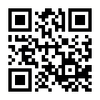文章基本信息
- 标题:Clinical and cost-effectiveness analysis of an open label, single-centre, randomised trial of spinal cord stimulation (SCS) versus percutaneous myocardial laser revascularisation (PMR) in patients with refractory angina pectoris: The SPiRiT trial
- 本地全文:下载
- 作者:M T Dyer ; KA Goldsmith ; SN Khan 等
- 期刊名称:Trials
- 印刷版ISSN:1745-6215
- 电子版ISSN:1745-6215
- 出版年度:2008
- 卷号:9
- 期号:1
- 页码:40
- DOI:10.1186/1745-6215-9-40
- 语种:English
- 出版社:BioMed Central
- 摘要:
Background
Patients with refractory angina have significant morbidity. This study aimed to compare two of the treatment options, Spinal Cord Stimulation (SCS) and Percutaneous Myocardial Laser Revascularisation (PMR) in terms of clinical outcomes and cost-effectiveness.
Methods
Eligible patients were randomised to PMR or SCS and followed up for exercise tolerance time (ETT), Canadian Cardiovascular Society (CCS) classification and the quality of life measures SF-36, Seattle Angina Questionnaire and the EuroQoL at 3, 12 and 24 months. Utilities were calculated using the EQ-5D and these and costs were compared between groups. The incremental cost-effectiveness ratio (ICER) per QALY for SCS compared to PMR was also calculated.
Results
At 24 months post-randomisation, patients that had SCS and PMR had similar ETT (mean difference 0.05, 95% CI -2.08, 2.18, p = 0.96) and there was no difference in CCS classification or quality of life outcomes. The difference in overall mean costs when comparing SCS to PMR was GBP5,520 (95% CI GBP1,966 to GBP8,613; p < 0.01) and the ICER of using SCS was GBP46,000 per QALY.
Conclusion
Outcomes after SCS did not differ appreciably from those after PMR, with the former procedure being less cost-effective as currently applied. Larger studies could clarify which patients would most benefit from SCS, potentially increasing cost-effectiveness.
Trial registration
Current Controlled Trials ISRCTN09648950

